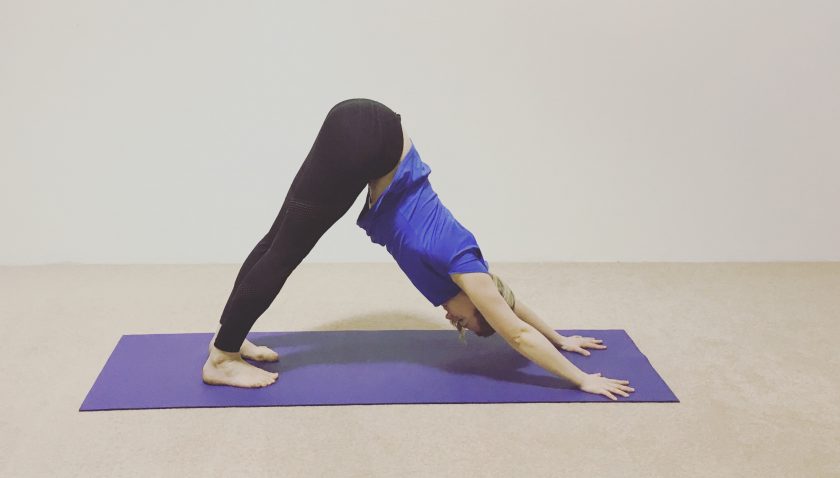At Yoga Hero, we regularly run (haha, pun intended) Yoga for Runners sessions, and we’re half of Roga, so we really do know how important it is to for runners to stretch out hard-working muscles and joints, and to know how to listen to your body to lessen aches and to prevent injury.
With that in mind, here are some great post-run yoga poses and some all-round good tips to improve your runs. This is a light-touch post, if there’s any poses you’re unsure of, you can email holly@yogahero.co.uk for more information. We have used the Sanskrit names as they’re generally more ‘google-able’ allowing you to look for images of the poses.
The aims of this sequence are:
* to strengthen arms and core, so they can propel your further, faster
* to loosen any stiffness in hip joints
* to stretch out legs, focusing on hamstrings, quads, calves and IT band
* to soothe feet – an easily overlooked area, but often regarded as the key to overall good health
Post-Run Yoga Sequence:
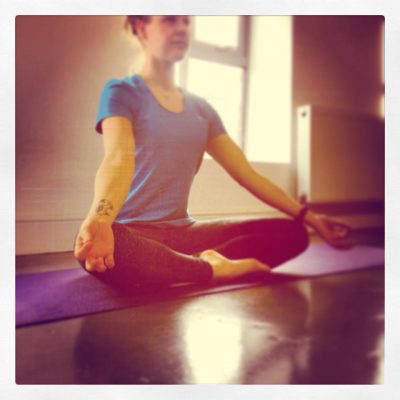
Come onto hands and knees for a few cat + cow stretches to warm up the spine.
Thread the needle to release shoulder and upper body tension.
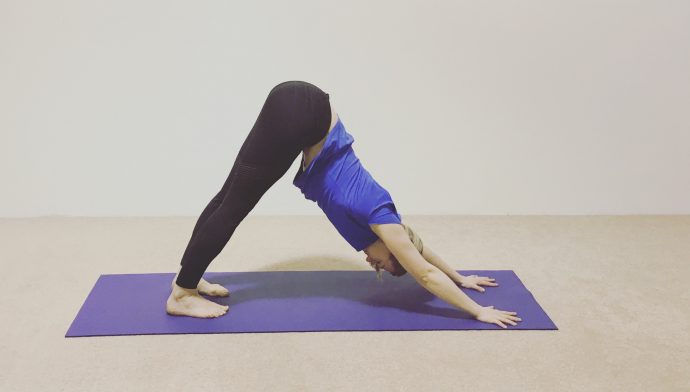
Come into downward dog, then shift the shoulders forwards for plank, to create heat and build arm and core strength, then lift the hips back to downward dog. Lower the knees to the mat for child’s pose, allowing your hips to be heavy, sinking back to the feet, walk the fingers forward to ease tension out of shoulders and arms.
Come to standing, take Parsvottanasana to deeply stretch the back of the legs, keep the breath smooth as you do this, keep the face and shoulders relaxed.
From Parsvottanasana, take the weight into the front leg and slowly, with control, come into Virabhadrasana III, the balance teaches us patience, and acceptance of things the way they are.
Step into Prasarita Padottanasana A, taking the hands onto the floor, and then Prasarita Paddottanasana C interlacing fingers behind the back to stretch out the front of the shoulder joints.
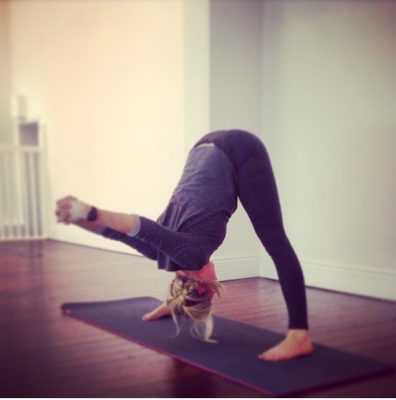
From here, turn the right foot 90 degrees and bend into the right knee for Virabhadrasana II, arms into a T position, keeping shoulders relaxed. This fabulous pose builds strength in the legs, and the mind! It’s especially good for building quad strength, which is important as knee injuries are commonly caused by weak quads (and tight hips). Repeat on the left side.
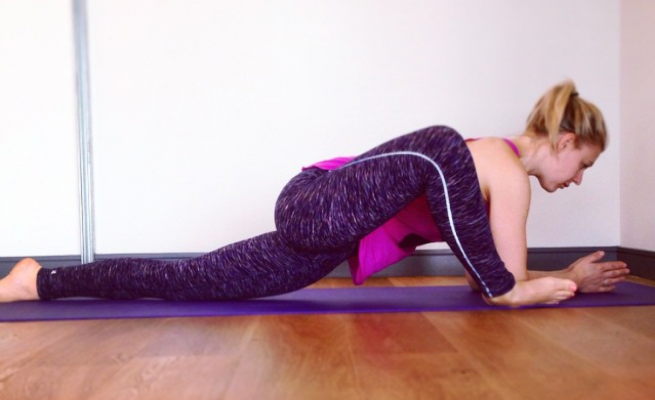
Take Utthan Pristhasana, ensuring there’s absolutely no discomfort in the knee. If you feel it in the knee, back off from the pose a bit / completely, and take advice from a medical professional. From here, come onto hands and knees again, tuck the toes under, and gently walk the hands back until most or all of your weight is going through the feet. It’s uncomfortable, but it’s SO good for you!
Come through to seated, and come into Ardha Gomukhasana, again, being very aware of the knee. This amazing pose gets very deep into the hip joint – approach with ultimate care.
Lie down for Setu Bandasana – taking care not to squeeze the glutes (the big muscles in the bottom), and keep the core engaged. Lower down gently.

Then take your right ankle onto the left thigh, close to the knee joint for Supta Kapotasana, working into the hip again. Try closing your eyes, breathing deep and noticing if your body is resisting the stretch anywhere and beware of the knee!
We’ll finish with an inversion – take Sarvangasana if you’re familiar with it, or if not, legs up the wall. This will drain lactic acid from the feet and legs, so it can be caught by the liver and kidneys and flushed out of the body – this is a great way to minimise post-run aches.
Relax in Savasana. Release the control of the breath, allow the body to breathe naturally and relax. Enjoy! x
NB This is an introduction to post-run yoga. It is, by no means, a comprehensive explanation of every detail of each pose mentioned. It is intended for an audience who are yoga beginners or improvers. If you have any questions or comments on the above, we would love to hear from you: holly@yogahero.co.uk
It’s also important to stress that these posts are for information purposes. To improve your post-run yoga, do go and see a qualified instructor, we cannot and do not accept any responsibility from any injury caused while practising these techniques. If in doubt about an injury or body condition, see a medical professional before embarking on any physical activity.

